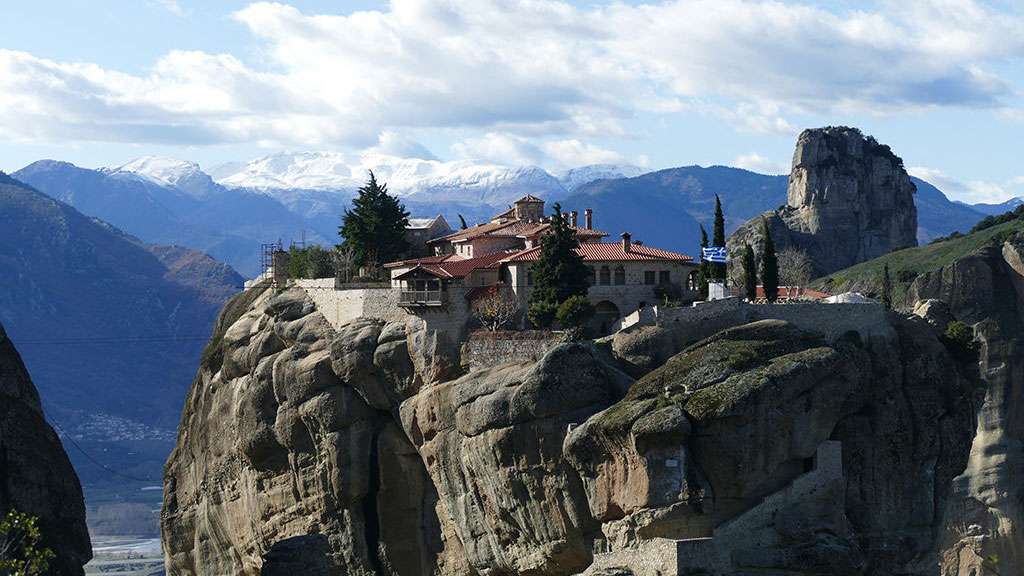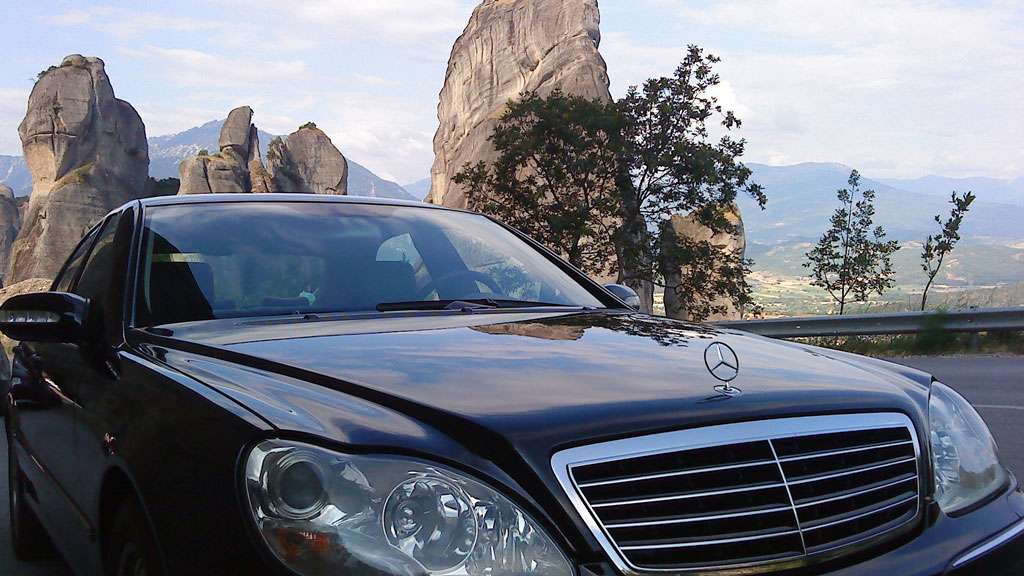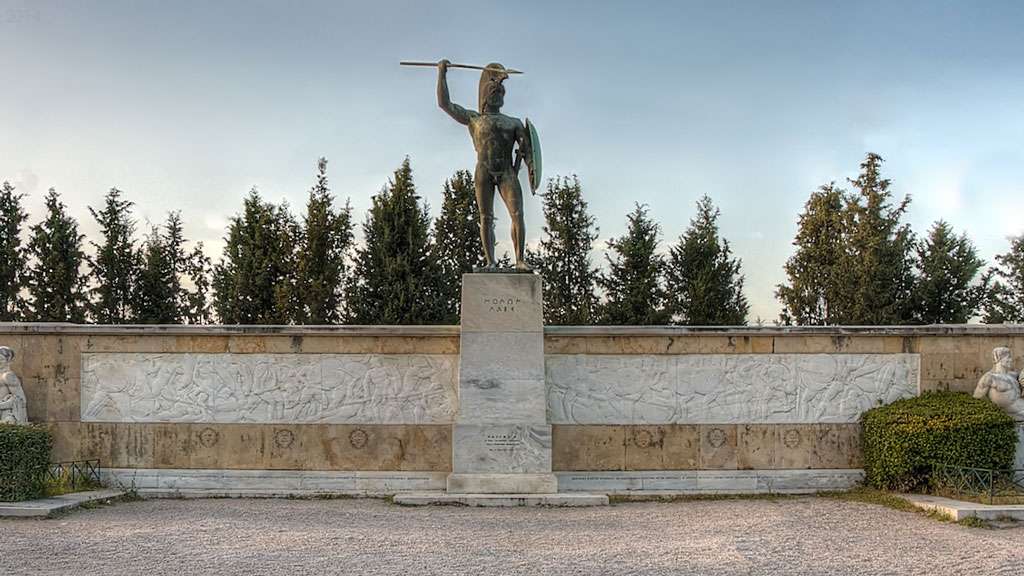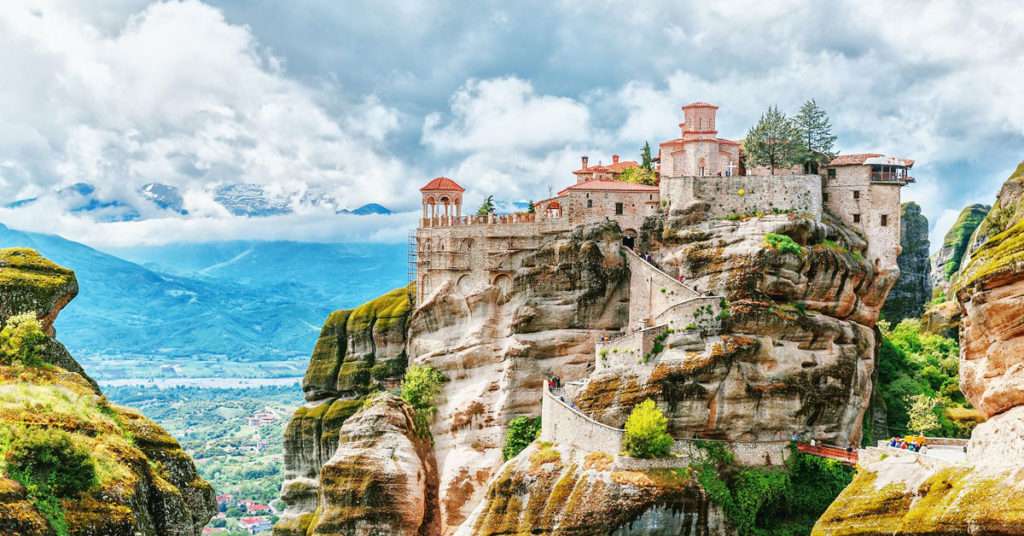Meteora is a unique area in Greece and quite possibly in the world. The wider area is full of impressive and massive rocks formed millions of years ago. Over time, they were split by earthquakes and further shaped by the wind, rain, and other natural phenomena. Meteora is hosting one of the biggest and most important groups of Eastern Orthodox monasteries, second in importance only to Mount Athos. UNESCO has characterized it as a unique phenomenon of cultural heritage.
It is about 360kms away from Athens, and one can surely visit Meteora during a one-day tour, but it would be an extremely long day, spending 8-9 hours in the car, a round trip of almost 750kms in one single day! We recommend spending two days on the particular tour, which will also give you a chance with a few deviations to have short stops on the way to interesting places such as the cities of Lamia and Trikala, Thermopylae and Kammena Vourla.
Meteora’s name means “suspended in the air”, “elevated”, and is etymologically related to meteor. The huge rock formations, a geological miracle rising into the sky, have sheltered Greek religious orders for almost 1,000 years; we can locate the first traces of their history at the 11thc. Of the original 24 monasteries, only six remain today (two hosting nuns, four monks), all of which can be visited. Leaving Athens, we’ll head north with our first stop after a couple of hours at Lamia, a city of continuous habitation since 3.000 BC and crowned by a beautiful castle built by the Knights Templar after the 4th Crusade in 1204.

As soon as we arrive at Meteora, we can visit the Holy Monastery of St. Stephen, which is one of the most attainable as we don’t have to climb stairs to reach it. The small church of St. Stephen was built in the middle of the 16th and decorated in 1545 or a little later, and The ‘Katholikon’ (the conventual church), honored to St. Charalambos in 1798. The old refectory of the convent is used as a museum nowadays. We drive to Kalambaka city, a few minutes away, where we can have lunch and check-in at the hotel. Later in the afternoon, if you want, you can visit the Natural History Museum of Meteora & Mushroom Museum, exploring the local wildlife and ecosystems, learn more about birds or discover the fascinating world of mushrooms (the region of Thessaly is one of the best for the cultivation of endemic mushrooms). Another option can be a drive around the rocks with the monasteries to see and take photos of the spectacular sunset.
Next morning, we’ll drive to the male Holy Monastery of Great Meteoron, the oldest and biggest of the monasteries. The church ‘Katholikon’, honored to the ‘Transfiguration’, was erected in the middle of 14th c. and 1387/88 and decorated in 1483 and 1552, but there are many other chapels in the monastery complex. In those early times, access to the monastery was achieved only through wooden ladders, ropes, and nets. It was like that until rather recently, only in 1923 did they build the 146 stairs one has to climb to reach the monastery. Please notice: wear good walking shoes. The Meteora monasteries have strict dress codes so women will need to wear a long skirt, dress or sarong, keeping your knees and shoulders covered so no trousers or shorts. However, all the monasteries have wrap skirts at the entrances that you can borrow. Men should also cover their shoulders and knees.
Probably one of the most interesting parts of the monastery is the sacristy containing shelves of the skulls of the monks who have lived there over the years, as well as other buildings such as the kitchen, the old age home, and the “trapeza”(dining hall). Great Meteoron monastery serves as the main museum for visitors to Meteora. After the visit and depending on the time, we can either return to Kalambaka for lunch or drive for less than half an hour to Trikala‘s beautiful city with the river Lithaios running right through it and have lunch there. The first indications of permanent settlement have been uncovered in the area dating back to 6,000 BC, it was also mentioned in Homer’s Iliad as having participated in the Trojan War with thirty ships, and it was the birthplace of Asclepius, the god of medicine, having his first healing centers in the city.

After lunch, we are heading south with our last stops at Thermopylae and then Kammena Vourla for a cup of coffee by the seaside before we return to Athens. The Battle of Thermopylae was fought at 480BC between an alliance of Greek city-states with approximately 7,000 men, led by King Leonidas of Sparta, and the Persian Empire of Xerxes with an army that was rumored to have numbered over one million soldiers.
The outnumbered Greeks led by King Leonidas held off the Persians for seven days, blocking the only road by which the massive Persian army could pass. After the second day of continuous battle, a local resident named Ephialtes betrayed the Greeks by revealing a small path used by shepherds. It led the Persians behind the Greek lines. It was then that king Leonidas, aware that his force was being outflanked, dismissed the bulk of the Greek army and remained to guard their retreat with 300 Spartans and 700 Thespians, being killed to the last. Both ancient and modern writers have used the Battle of Thermopylae as an example of a patriotic army’s power defending its native soil. The defenders’ performance is also used as an example of the advantages of training, equipment, and good use of terrain as force multipliers. It has become a symbol of courage against overwhelming odds.

At the site, you will see the “Leonidas Monument”, in honor of the Spartan king. It features a bronze statue of Leonidas with a sign, under the statue, reading simply: “Μολὼν λαβέ” (“Come and take them!”—as in answer to Xerxes’ demand that the Greeks give up their weapons). The metope below depicts battle scenes. The two marble statues on the left and the right of the monument represent the river Eurotas and Mount Taygetos, famous landmarks of Sparta.

